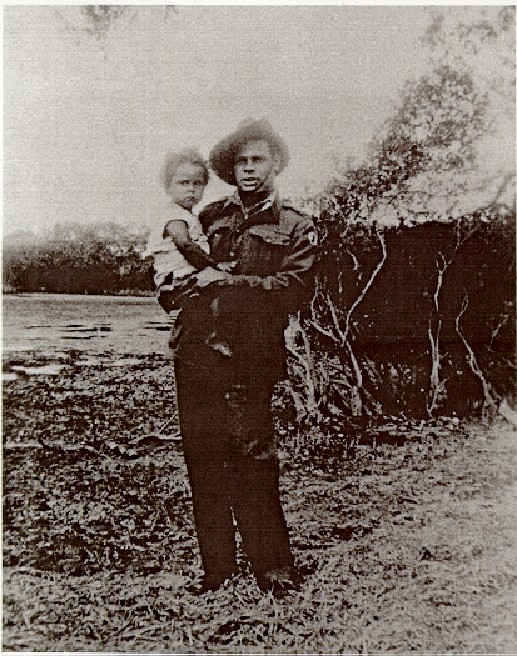WARNING: In accordance with traditional laws often followed among Indigenous communities in Australia the imagery of deceased people may offend some people. Please note there are images below of people who are now deceased.
Images below

IMAGES OF INDIGENOUS AUSTRALIANS DURING WARTIME |
WARNING: In accordance with traditional laws often followed among Indigenous communities in Australia the imagery of deceased people may offend some people. Please note there are images below of people who are now deceased.
Images below

World War Two - Western Desert 1941, a King Island Aboriginal soldier hoping for some extra help with his Anti-aircraft gun!

A good mate of mine Claude McDermott gave me a copy of this picture. It is of his Grandfather Claude Snr, and it was taken during World War at Tweed Heads N.S.W. The river in the background is the Tweed River, with the local mission on the island behind. Claude was taken Prisoner at Singapore, fortunately he returned and went back to the Tweed Heads district where he passed away in 1975.

"Mine tink it plurry bunyip" (I think its a bloody bunyip) One of several derogatory images I have found depicting Aboriginals in World War Two. This one features a Curtiss P40 Kittyhawk fighter plane based in the Northern Territory during World War Two with a painted on shark mouth scaring a very stereotypical Aboriginal man.


This image is one of my favourites. It contrasts strongly with the above image in portraying Aboriginal's in a positive light. Here a downed pilot (USAAF or RAAF) has been rescued by local Aboriginals somewhere in the Northern Territory or Far North Queensland.

The remains of a crashed G4m2 "Betty" bomber of the Imperial Japanese Navy that was shot down during a night time raid on Darwin. Nine bodies were found near this wreck, four or five more than the usual complement for this type of bomber. RAAF intelligence was vitally interested in examining any Japanese aircraft brought down (160 were shot down over Australia), and found Aboriginals very useful for this aspect of their work. Their bush skills and keen powers of observation enabled them to locate crash sites more quickly than white Australians and to find very small but important pieces of the aircraft which might be spread over a large area. They were also able to track any survivors who may have wandered away from the crash site. In the middle of the photo is an unknown Aboriginal male (Hall, B. "Fighters from the Fringe" source: AWM).

Private Graeme "Brownie" Brown, of 2 Platoon, A Company 1st
Battalion, The Royal Australian Regiment (1RAR) surrounded by children while on a foot
patrol around Baidoa, Somalia on the 22nd of March 1993. He was serving with the
Australian contingent of the Unified Task Force in Somalia (UNITAF). Photo by George
Gittoes, part of a series featuring "Brownie". AWM image: P1735.400